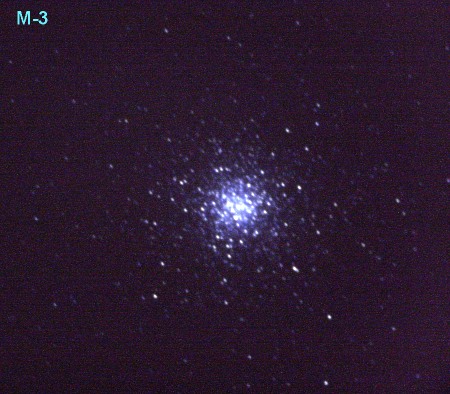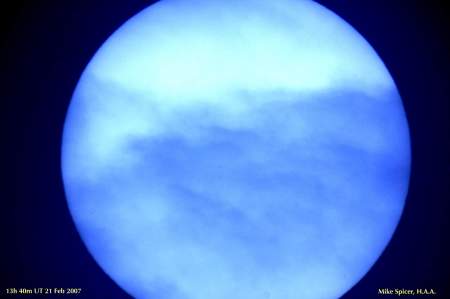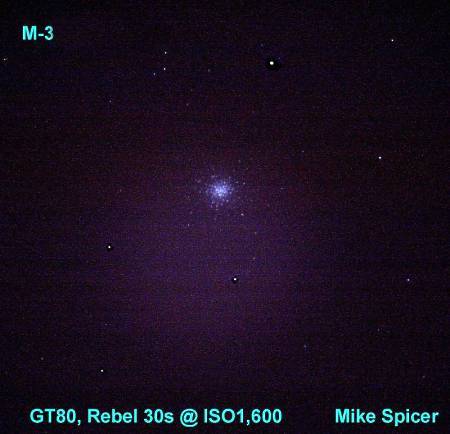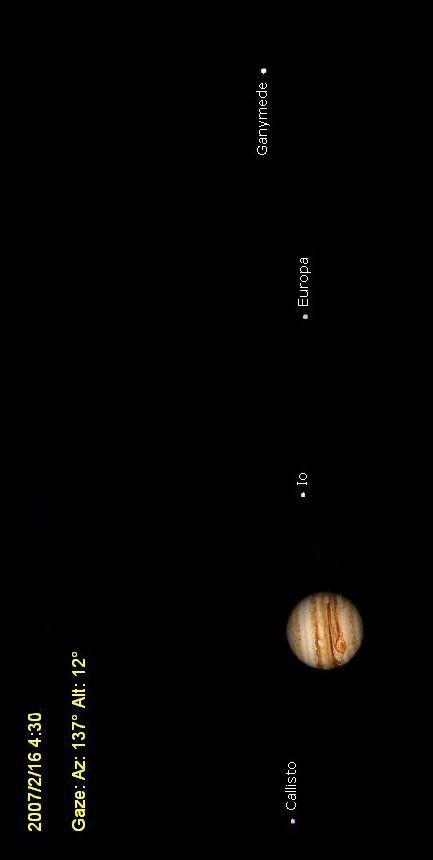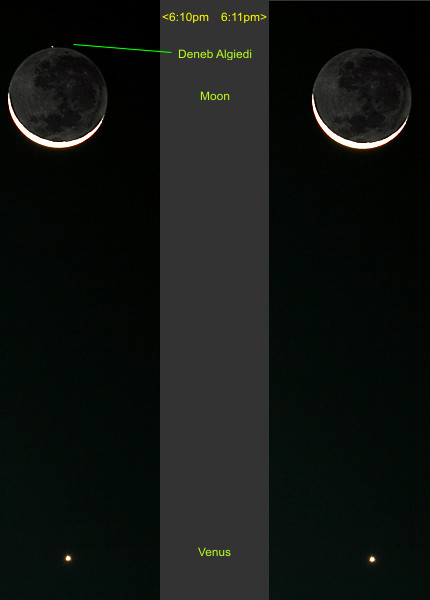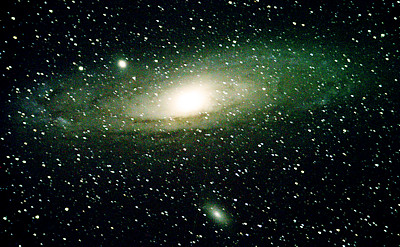LUNAR OCCULTATION OF THE PLEIADES, 23 FEB 07
Such a sunny, bright afternoon with the crescent Moon almost overhead…and could you see any of the Pleiades near that Moon, against the bright blue sky? I certainly did not see any stars through the eyepiece of my telescopes (and I tried a few). Here’s an image, reduced to a 450 pixel wide b/w in JPG format:

UPDATE: A GREAT OBSERVING NIGHT FRIDAY 23 FEB
It was cold with a brisk wind from time to time, but the sky was beautifully transparent – great for observing. Some friends were stopping by to observe with me so I set up an extra scope with a binoviewer (no waiting). I did some imaging while waiting for them to arrive.
The air was unsteady at first, so the images of Saturn I obtained were not better than those of last November. There are very few nights of excellent seeing and you never know, the air could settle down like it did tonight.
I tried out a pair of TeleVue 19mm wide field eyepieces, comparing them with a pair of 19mm Panoptics in the Denkmeier – the view was exactly the same, I could even use one of each in the binoviewer! So I have two excellent eyepieces for sale!
From the comments of all my visitors tonight, it’s obvious that aperture determines the best views. No one looked through the 6″ Mak for long when the 11″ SCT showed a much brighter Saturn with so many moons. Tim said he could see Enceladus – a surprise, since it was so close to the planet.
The patio is convenient – easy to come in from the cold. I don’t think we would have lasted long at Binbrook in the wind! I stayed out until 3 a.m. imaging a variety of objects. I wasn’t happy with the M-3 images from a few nights ago so I tried again tonight after imaging some galaxies. Here is a reduced-size/quality shot of a much brighter M-3 without any vignetting:
